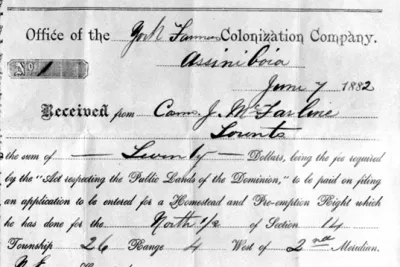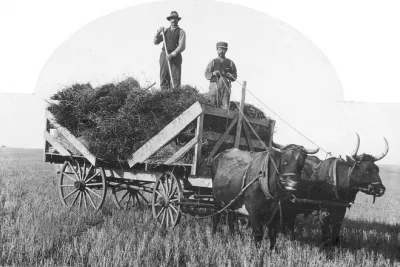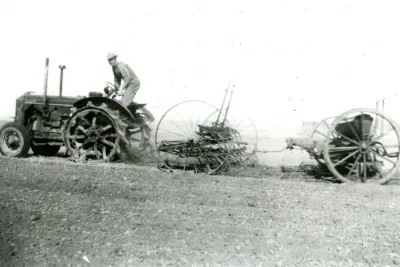History and Background
The Administration of Land in Saskatchewan
Following the transfer of ownership of Rupert’s Land and the North-West Territories from the Hudson’s Bay Company to the Dominion of Canada in 1868, the Canadian government passed the Dominion Lands Act of 1872 to set out guidelines for the settlement of Western Canada.
Starting in the 1870s, surveyors were sent out to mark boundaries and survey the area which would become Saskatchewan. The Dominion Government decided to develop a grid system for land description in the West, similar to that used in United States. For a detailed explanation of the grid system that was set up in Saskatchewan, and to learn how to read a legal land description and identify the location on a map, please read Measuring Land in Saskatchewan, prepared by the Information Services Corporation of Saskatchewan.
During the early surveys, the Dominion Government set aside almost all of the even-numbered sections in Saskatchewan as 160-acre homestead grants.

C. J. MacFarline's interim receipt for his homestead fees on the North half, Section 14-26-4 W.2. PAS Photo S-C36.
Designated tracts in each township were reserved or appropriated for a variety of other purposes, including:
Railway lands:
Odd-numbered sections except 11 and 29 were reserved for railway grants, which were made to railway companies in partial payment for building railways.
School lands:
Section 11 and 29 were reserved as school lands that could be sold by local school districts to raise money to finance the building of schools.
Hudson’s Bay Company Lands:
Section 8 and section 26 were retained by the Hudson’s Bay Company as part of the 1870 Deed of Surrender; the company gradually sold these lands until 1984, when it donated about 5100 acres to the Saskatchewan Wildlife Association for use as habitat reserves.
Métis Scrip:
Scrip, either as land or money, was offered to Métis families to compensate them for loss of their Indigenous title and for grievances that led to the 1885 Resistance. To qualify for scrip that was offered in 1885 the applicants had to prove they were living in the North-West Territories prior to 15 July 1870. Those who applied for scrip from 1886 - 1902 or in 1906 had to prove that they were living in the North-West Territories prior to 31 December 1885. The land scrip entitlement was for 240 acres that had to be selected from land that had been allocated as homestead land. Frequently this land was a long distance from where the grantees were living so many sold their scrip, often for less money than it was worth, to land speculators.
Land Colonization Companies:
In the 1880s, as many as twenty companies contracted with the government to purchase sections of Dominion Lands in defined tracts, which the companies would sell in sponsored settlement schemes. The sponsors could receive a rebate on the purchase price of the lands depending on the success of settlement in the tract. A total of about three million acres was committed under these plans. For the most part, sponsored settlement failed after 1885 when the boom period of Canadian Pacific Railway construction had finished.
During the settlement period, special land grants were given to individuals who served the Dominion in a military capacity.

Harvesting in the Saskatoon district, ca. 1911. PAS Photo R-A7657.
Some lands in the West fell outside of the survey system.
These lands were not resurveyed by the Dominion surveyors,
and they fell outside the area included in the grid system.
Examples that fall into this category include:
- Indian reserves which had been established prior to the survey;
- River lots which were protected and not incorporated into the
grid system during the survey; - Unsettled land in northern Saskatchewan;
- Hudson’s Bay Company posts, in which case the land was
retained by the Hudson’s Bay Company.
Transfer of Land to Saskatchewan in 1930
When Saskatchewan became a province in 1905, the Dominion Government retained control over land and all other natural resources within provincial boundaries. Consequently, the administration of Dominion resources such as homestead lands was retained by the Department of the Interior and managed in Dominion Land offices.
In 1930, the Canadian government transferred control of all of Saskatchewan's natural resources, including land, to the province. From this point forward, the Province administered land and other resources within provincial boundaries. Provincial land titles offices oversaw the homestead granting process and maintained land title records. Today, Information Services Corporation of Saskatchewan maintains the province’s land title records.
Homestead files are split into two series: Pre-1930 Homestead Files and Post-1930 Homestead Files, which reflects the administrative history of how homestead records were organized.

